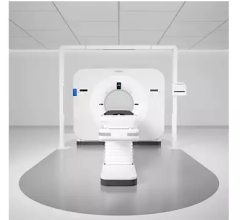
December 19, 2008 — While radiation treatments deliver precise doses of high-energy X-rays to stop cancer cells from spreading or to shrink tumors, oncologists have become increasingly concerned about inadvertent exposures during head and neck cancer treatments to nerves responsible for upper body mobility. To reduce the possibility of permanent nerve damage, UC Davis Cancer Center researchers have taken the lead in establishing new treatment guidelines for physicians nationwide.
The team, led by Allen Chen, assistant professor of radiation oncology, noticed a trend following treatment for cancers of the tonsil, tongue, throat, and other head and neck organs: A number of patients reported ongoing weakness and sensation problems in their necks, shoulders and upper arms. Chen recognized that these symptoms could be attributed to injury of the brachial plexus nerves, which begin at the back of the neck and extend behind the clavicle and down to the hand. Specific standards for delivering radiation treatments and avoiding this critical body structure, however, did not exist.
"Radiation is an essential treatment for most head and neck cancers, and current technologies make it possible for us to successfully target those tumors," said Chen. "Exposure to other tissues is unavoidable and typically not considered serious or long-term. But brachial plexus damage can be permanent and debilitating, so we decided to develop treatment guidelines to reduce radiation exposure to these nerves."
As a result, Chen and his colleagues established step-by-step techniques for identifying the brachial plexus complex using common anatomical "bench posts" that are easily visible with computed tomography (CT) scans commonly used for treatment planning. He then designed delivery contours for intensity-modulated radiation therapy (IMRT) treatments to avoid those areas, and tested the guidelines on 10 patients with a variety of head and neck cancers.
Outcomes of the study show that the guidelines, which are published in the December 2008 issue of the International Journal of Radiation Oncology, Biology and Physiology, can be used to evaluate the exact radiation doses delivered to the brachial plexus as well as potentially reduce exposures to levels that meet current medical standards. Patients in the study will continue to be monitored for upper body mobility symptoms and to determine if their radiation treatments were as effective as those delivered prior to the new guidelines.
Chen will next refine the guidelines for patients whose anatomies are distinct due to medical treatments or who may have alternate brachial plexus pathways. For some people, for instance, these nerves begin at a slightly lower or higher point in the neck.
"Not all patients have the same body structures, and we will be adding to the recommendations to account for those differences," Chen said. "Our goals are to lessen the impact of cancer treatments as much as possible, and we are committed to taking a leadership role in making sure that radiation treatments for cancer are as safe, effective and comfortable as possible."
Other investigators on the study were William Hall, Michael Guiou, Samir Narayan, Arthur Dublin, Srinivisan Vijayakumar and James Purdy of UC Davis; and Nancy Lee of Memorial Sloan-Kettering Cancer Center.
Source: News from UC Davis Health System
For more information: www.ucdmc.ucdavis.edu


 December 11, 2025
December 11, 2025 









